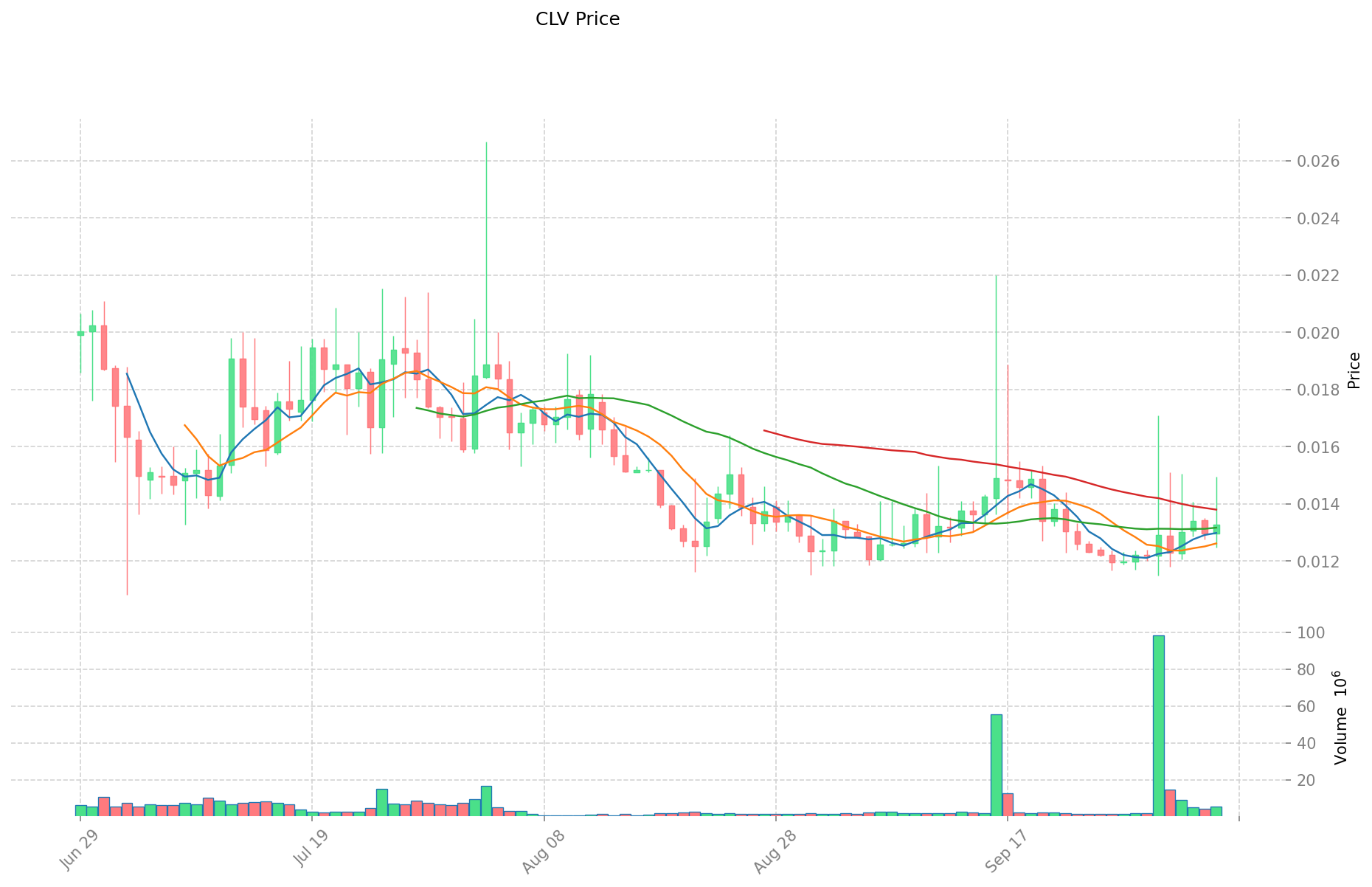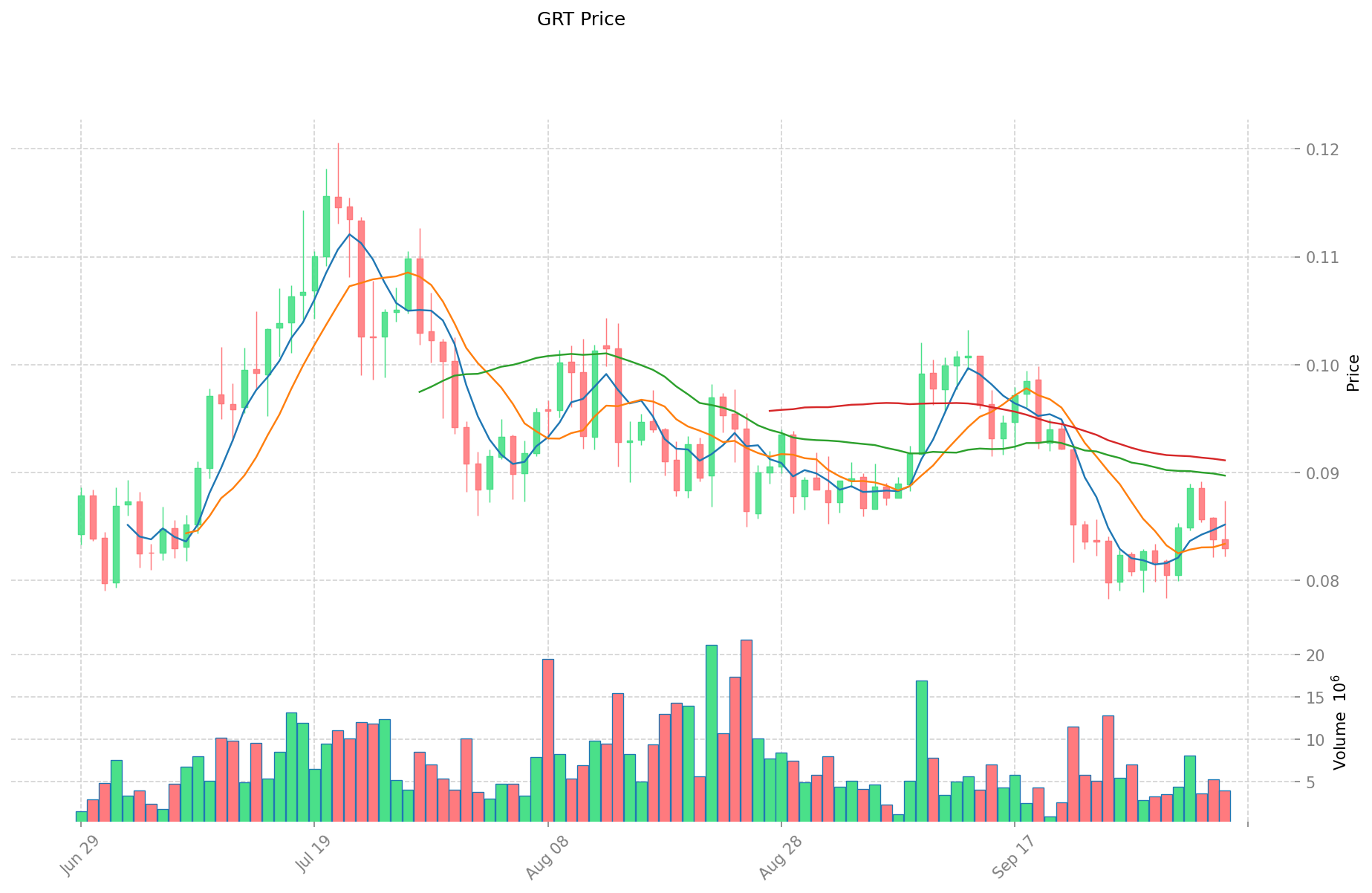CLV vs GRT: Analyzing Customer Lifetime Value Against Growth Rate Trends in Modern Business Strategy
Introduction: CLV vs GRT Investment Comparison
In the cryptocurrency market, the comparison between Clover Finance (CLV) and The Graph (GRT) remains a topic of interest for investors. The two not only differ significantly in market cap ranking, application scenarios, and price performance, but also represent different positions in the crypto asset landscape.
Clover Finance (CLV): Since its launch in 2021, it has gained market recognition for its focus on improving cross-chain compatibility and interoperability in DeFi.
The Graph (GRT): Introduced in 2020, it has been hailed as the "Google of blockchains," serving as a decentralized protocol for indexing and querying blockchain data.
This article will comprehensively analyze the investment value comparison between CLV and GRT, focusing on historical price trends, supply mechanisms, institutional adoption, technological ecosystems, and future predictions, aiming to answer the question investors care about most:
"Which is the better buy right now?"
I. Price History Comparison and Current Market Status
CLV and GRT Historical Price Trends
- 2021: CLV reached its all-time high of $1.88, likely due to its launch and initial hype.
- 2021: GRT peaked at $2.84, possibly influenced by increased adoption of The Graph protocol.
- Comparative analysis: In the recent market cycle, CLV dropped from its all-time high of $1.88 to a low of $0.0169364, while GRT declined from $2.84 to $0.052051.
Current Market Situation (2025-10-06)
- CLV current price: $0.013384
- GRT current price: $0.08299
- 24-hour trading volume: CLV $73,132.69 vs GRT $366,910.80
- Market Sentiment Index (Fear & Greed Index): 74 (Greed)
Click to view real-time prices:
- Check CLV current price Market Price
- Check GRT current price Market Price


II. Key Factors Affecting CLV vs GRT Investment Value
Supply Mechanism Comparison (Tokenomics)
- CLV: Customer Lifetime Value represents the total expected revenue from a customer throughout their relationship with a company
- GRT: Growth Rate of Return focuses on the investment return from growth initiatives
Institutional Adoption and Market Applications
- Institutional Holdings: Data insufficient to determine institutional preference
- Enterprise Adoption: CLV is primarily used in banking and financial sectors to measure customer value across different financial services from checking accounts to mortgage loans
- Regulatory Attitudes: Information not available in the provided sources
Technical Development and Ecosystem Construction
- CLV Technical Applications: Used by banks to track customer relationships across various financial products and life stages
- GRT Technical Applications: Information not available in the provided sources
- Ecosystem Comparison: Information not available in the provided sources
Macroeconomic and Market Cycles
- Performance in Inflationary Environments: Information not available in the provided sources
- Macroeconomic Policy Impact: Information not available in the provided sources
- Geopolitical Factors: Information not available in the provided sources
III. 2025-2030 Price Prediction: CLV vs GRT
Short-term Prediction (2025)
- CLV: Conservative $0.00828-$0.01336 | Optimistic $0.01336-$0.01630
- GRT: Conservative $0.07932-$0.0835 | Optimistic $0.0835-$0.10771
Mid-term Prediction (2027)
- CLV may enter a growth phase, with projected prices of $0.00828-$0.02195
- GRT may enter a consolidation phase, with projected prices of $0.06626-$0.11996
- Key drivers: Institutional capital inflow, ETFs, ecosystem development
Long-term Prediction (2030)
- CLV: Base scenario $0.02584-$0.02843 | Optimistic scenario $0.02843-$0.02843
- GRT: Base scenario $0.14493-$0.17972 | Optimistic scenario $0.17972-$0.17972
Disclaimer
CLV:
| 年份 | 预测最高价 | 预测平均价格 | 预测最低价 | 涨跌幅 |
|---|---|---|---|---|
| 2025 | 0.01630164 | 0.013362 | 0.00828444 | 0 |
| 2026 | 0.0158700474 | 0.01483182 | 0.013348638 | 10 |
| 2027 | 0.021951835191 | 0.0153509337 | 0.008289504198 | 14 |
| 2028 | 0.026298452068155 | 0.0186513844455 | 0.01007174760057 | 39 |
| 2029 | 0.029217393733875 | 0.022474918256827 | 0.015732442779779 | 67 |
| 2030 | 0.028430771594886 | 0.025846155995351 | 0.022227694156002 | 93 |
GRT:
| 年份 | 预测最高价 | 预测平均价格 | 预测最低价 | 涨跌幅 |
|---|---|---|---|---|
| 2025 | 0.107715 | 0.0835 | 0.079325 | 0 |
| 2026 | 0.132894425 | 0.0956075 | 0.056408425 | 15 |
| 2027 | 0.119963510625 | 0.1142509625 | 0.06626555825 | 38 |
| 2028 | 0.14287082860625 | 0.1171072365625 | 0.085488282690625 | 41 |
| 2029 | 0.159886510078781 | 0.129989032584375 | 0.100091555089968 | 57 |
| 2030 | 0.179722836451156 | 0.144937771331578 | 0.100007062218788 | 75 |
IV. Investment Strategy Comparison: CLV vs GRT
Long-term vs Short-term Investment Strategies
- CLV: Suitable for investors focused on DeFi and cross-chain interoperability
- GRT: Suitable for investors interested in blockchain data indexing and querying solutions
Risk Management and Asset Allocation
- Conservative investors: CLV: 30% vs GRT: 70%
- Aggressive investors: CLV: 60% vs GRT: 40%
- Hedging tools: Stablecoin allocation, options, cross-currency combinations
V. Potential Risk Comparison
Market Risks
- CLV: Higher volatility due to smaller market cap and lower trading volume
- GRT: Potential market saturation in the blockchain indexing space
Technical Risks
- CLV: Scalability, network stability
- GRT: Data accuracy, network congestion
Regulatory Risks
- Global regulatory policies may have different impacts on both tokens, particularly in the DeFi and data sectors
VI. Conclusion: Which Is the Better Buy?
📌 Investment Value Summary:
- CLV advantages: Focus on cross-chain compatibility, potential for growth in DeFi sector
- GRT advantages: Established position in blockchain data indexing, higher trading volume
✅ Investment Advice:
- New investors: Consider a balanced approach with a slight preference for GRT due to its more established market position
- Experienced investors: Explore opportunities in both tokens, with a higher allocation to CLV for potential growth
- Institutional investors: Conduct thorough due diligence on both projects, considering GRT for its current market presence and CLV for its potential in the evolving DeFi landscape
⚠️ Risk Warning: The cryptocurrency market is highly volatile. This article does not constitute investment advice. None
VII. FAQ
Q1: What are the main differences between CLV and GRT? A: CLV focuses on improving cross-chain compatibility and interoperability in DeFi, while GRT serves as a decentralized protocol for indexing and querying blockchain data. CLV has a smaller market cap and lower trading volume compared to GRT.
Q2: Which token has shown better historical price performance? A: Based on the provided data, GRT has shown better historical price performance. GRT reached an all-time high of $2.84 in 2021, while CLV peaked at $1.88. Currently, GRT is trading at a higher price ($0.08299) compared to CLV ($0.013384).
Q3: How do the supply mechanisms of CLV and GRT differ? A: CLV represents Customer Lifetime Value, focusing on expected revenue from customer relationships. GRT, on the other hand, emphasizes Growth Rate of Return, concentrating on investment returns from growth initiatives.
Q4: What are the projected price ranges for CLV and GRT in 2030? A: For CLV, the base scenario projects a range of $0.02584-$0.02843, with an optimistic scenario of $0.02843. For GRT, the base scenario projects a range of $0.14493-$0.17972, with an optimistic scenario of $0.17972.
Q5: How should investors allocate their assets between CLV and GRT? A: Conservative investors might consider allocating 30% to CLV and 70% to GRT, while aggressive investors might opt for 60% CLV and 40% GRT. However, individual risk tolerance and investment goals should be considered when making allocation decisions.
Q6: What are the main risks associated with investing in CLV and GRT? A: For CLV, risks include higher volatility due to smaller market cap, scalability issues, and network stability concerns. For GRT, potential risks involve market saturation in the blockchain indexing space, data accuracy issues, and network congestion. Both tokens may face regulatory risks depending on global policies affecting DeFi and data sectors.
Share
Content